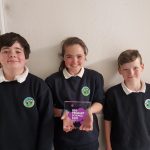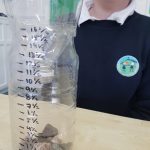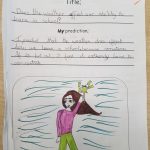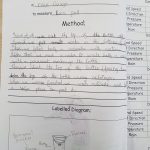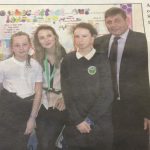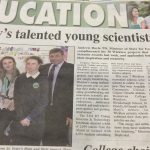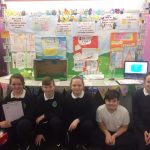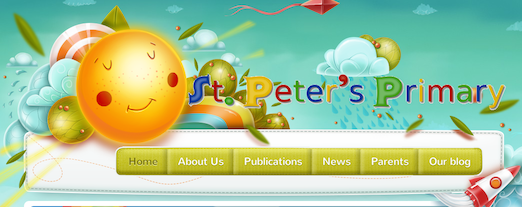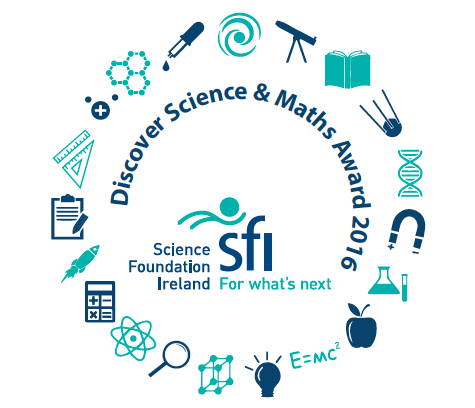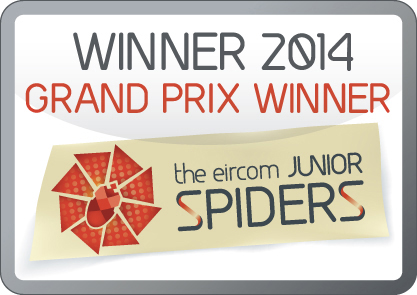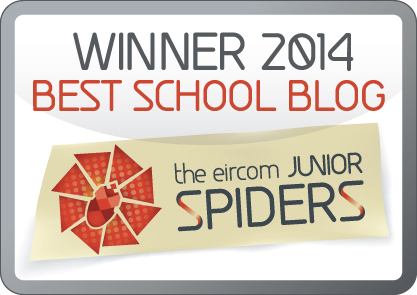
6th Class took part in the RDS Young Scientist Fair once again. Our theme this year was our climate, specifically looking at the question of “Does weather affect our ability to learn in school?”.
After we had agreed on the theme and question for our Science presentation, we began by making our predictions. Some of the pupils thought they weather would affect us in school. For example, Leanne thought the sound of rain is very relaxing so that in turn, might help us concentrate better in class. Abbie also made the point that sometimes people get headaches when it is too hot and that it makes it hard to get your work done then.
However, not everybody agreed on this. This provoked great debate amongst the class, with Finn arguing that once curtains are closed and you have music on, you are unaware of the weather outside so how can it affect your work. Other children in the class made the point that “weather can’t get to our brains!”.
Following our class discussions we agreed that we had to conduct an experiment to try and help us come up with a scientific outcome to our question. For this, each pupil had their own learning journal for the project. They recorded what type of weather it was outside each day, recording specific details regarding the weather such as what direction the wind was blowing from. Each pupil had questions to answer for each day in their learning journal. These questions included how they felt and self-assessed the quality of their work for the day.
To gather specific information on the weather for our learning journals, we decided we needed to construct our own weather instruments. We wanted to make a rain gauge to measure the amount of rainfall each day, a barometer to measure the air pressure, a wind vane to measure what direction the wind was blowing each day, and an anemometer to measure the wind speed.
One group in the class made the rain gauge. For this they got a two litre bottle and cut off the top quarter of it. We turned the quarter of the bottle upside down and used it as a funnel for the rain water. We made sure it wasn’t blown over by the wind by putting stones in the bottom of it. We used permanent marker to mark off the different heights in centimetres along the side of the bottle.
Another group made the barometer. They took a jam jar and put a balloon over the top of it. Two straws were then sellotaped together to the balloon. A cardboard arrow was cut out and attached to the straws. As the air pressure changed in the jar, the arrow would move on the straws to show us that the air pressure had changed.
A third group made the ameometer, using a pencils and cups. It was tricky to stick them altogether. One of the cups had an “x” put on it so that we could count how many times the cups rotated in a minute in the wind. We chose a minute to help make it a fair test, to help factor in sudden gusts of wind.
The fourth and final group made a wind vane. They used a paper plate, which was labelled north, south, east and west. When the pencil blew in the wind, it showed which direction the wind was coming from.
For 2 weeks, during the months of December and January, we recorded the weather each day, along with our answers to our learning journal questions. After we had completed the two week period and had collected all of our data, our next job was to analyse it using the whole class data.
Our observations from the data recorded were that our concentration levels were found to be low on windy days. It was also found that we couldn’t release our energy on rainy days which in turn affected our learning outcomes in the classroom. A third observation was that when it was sunny, we found it hard to concentrate because some of us couldn’t wait to get outside to play!
On January 12th, we took our findings with us into the RDS Young Scientist Exhibition. Five pupils were chosen to represent the school. We had spent days doing mock interviews and presentations in school to prepare us for the busy day ahead of us. We also spent a lot of time preparing the backdrop for our stand at the Science fair which helped us display our project and our findings. We also made a Science quiz for visitors to take, to help them interact with our project.
The judges were very impressed with our research, including RTE Weather Presenter Evelyn Cusack. Ms. Cusack took our weather quiz and was the only person to get top marks on in during the day. We were delighted when she presented us with our trophy, a great reward for all the hard work put in by all the boys, girls and our teacher.

